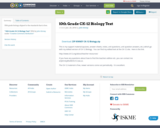
10th grade biology aligned to the standards that is free.
- Subject:
- Life Science
- Material Type:
- Full Course
- Date Added:
- 05/13/2015

10th grade biology aligned to the standards that is free.
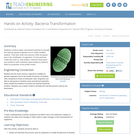
Students construct paper recombinant plasmids to simulate the methods genetic engineers use to create modified bacteria. They learn what role enzymes, DNA and genes play in the modification of organisms. For the particular model they work on, they isolate a mammal insulin gene and combine it with a bacteria's gene sequence (plasmid DNA) for production of the protein insulin.
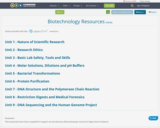
This materials have been compiled to support an introductory Biotechnology course for high school students.
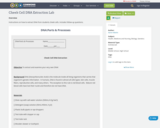
Instructions on how to extract DNA from students cheek cells. Includes follow-up questions.
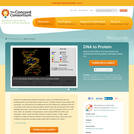
Explore the relationship between the genetic code on the DNA strand and the resulting protein and rudimentary shape it forms. Through models of transcription and translation, you will discover this relationship and the resilience to mutations built into our genetic code. Start by exploring DNA's double helix with an interactive 3D model. Highlight base pairs, look at one or both strands, and turn hydrogen bonds on or off. Next, watch an animation of transcription, which creates RNA from DNA, and translation, which 'reads' the RNA codons to create a protein.

In this capstone course, students will use new and previous knowledge about drug delivery and biopharmaceutics, to design an innovation. Throughout the course students will engage in learning opportunities related to real-world scenarios in drug delivery, gain a better understanding of the anatomy and physiology related to drug delivery, and participate in a self-directed project to solve a fictitious problem. This learning tool will guide students through the process of understanding real-world applications of drug delivery and how drug delivery is applied to treating infectious diseases. DDF’s innovation project is aligned with NGSS and Common Core standards in math and ELA core curriculum subject areas. The learning activities, final project, and mid-unit assessments are provided to the teacher and students in the form of eLearning readings, quizzes, interactive tools, student response sheets, and presentation outlines. Students using this module should find success in self-directed learning, though they may use additional resources in the community, the guidance of teachers, the advice of scientists or biomedical professionals at DDF, or the knowledge presented in scientific literature to help them achieve their goal; though this module should provide most of the tools they will need for guidance. For more information on in-person learning experiences, please contact our DDF eLearning Project Manager, Lindsay Malcolm: lmalcolm@tsrlinc.com

consejos nutricionale
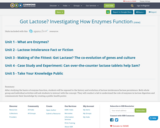
After studying the basics of enzyme function, students will be exposed to the history and evolution of lactose intolerance/lactase persistence. Both whole group and individual activities will ask students to interact with the concept. They will conduct a lab to understand the role of enzymes in lactose digestion and communicate their knowledge by creating a public health poster.

After studying the basics of enzyme function, students will be exposed to the history and evolution of lactose intolerance/lactase persistence. Both whole group and individual activities will ask students to interact with the concept. They will conduct a lab to understand the role of enzymes in lactose digestion and communicate their knowledge by creating a public health poster.
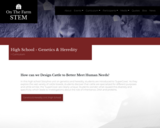
How can we Design Cattle to Better Meet Human Needs?
In this high school Storyline unit on genetics and heredity, students are introduced to ‘SuperCows’. As they explore the vast variety of cattle breeds, students discover that cattle are specialized for different purposes and while similar, the ‘SuperCows’ are clearly unique. Students wonder what caused this diversity and specificity which leads to investigations about the role of inheritance, DNA and proteins.
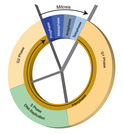
With this resource, you will find a link to a Google Folder that contains the content of an online module that will teach students about the cell cycle, structure of DNA, DNA replication, and mitosis. Within this module, there are a number of interactive activites to help students understanding of the topics.

Tips and guidelines to help you create resources that align with OpenStax titles
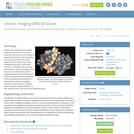
Students are introduced to the latest imaging methods used to visualize molecular structures and the method of electrophoresis that is used to identify and compare genetic code (DNA). Students should already have basic knowledge of genetics, DNA (DNA structure, nucleotide bases), proteins and enzymes. The lesson begins with a discussion to motivate the need for imaging techniques and DNA analysis, which prepares students to participate in the associated two-part activity: 1) students each choose an imaging method to research (from a provided list of molecular imaging methods), 2) they research basic information about electrophoresis.
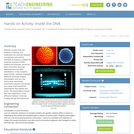
Students conduct their own research to discover and understand the methods designed by engineers and used by scientists to analyze or validate the molecular structure of DNA, proteins and enzymes, as well as basic information about gel electrophoresis and DNA identification. In this computer-based activity, students investigate particular molecular imaging technologies, such as x-ray, atomic force microscopy, transmission electron microscopy, and create short PowerPoint presentations that address key points. The presentations include their own explanations of the difference between molecular imaging and gel electrophoresis.
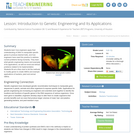
Students learn how engineers apply their understanding of DNA to manipulate specific genes to produce desired traits, and how engineers have used this practice to address current problems facing humanity. They learn what genetic engineering means and examples of its applications, as well as moral and ethical problems related to its implementation. Students fill out a flow chart to list the methods to modify genes to create GMOs and example applications of bacteria, plant and animal GMOs.
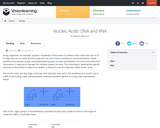
This lesson is an introduction to the structure and function of DNA including the process of DNA replication.

Patterns Biology is the culminating course in the 3-year high school Patterns Science sequence. Patterns Biology focuses on three-dimensional (3D) learning through culturally responsive, phenomena-based storylines that intertwine the disciplinary core ideas of biology with the scientific and engineering practices and crosscutting concepts as described in the Next Generation Science Standards (NGSS).
The Patterns High School Science Sequence (https://hsscience4all.org/) is a three year course pathway and curriculum aligned to the Next Generation Science Standards (NGSS).
Each course utilizes:
- Common instructional strategies
- Real world phenomena
- Design challenges to engage students and support their learning.
For more information, contact us at info@pdxstem.org.
The curriculum is a combination of teacher-generated and curated open-content materials. The Teacher-generated materials are shared freely under a Attribution-NonCommercial-Sharealike Creative Commons License.
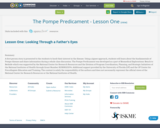
A first person story is presented to the students to hook their interest in the disease. Using a jigsaw approach, students will learn about the fundamentals of Pompe disease and share information during a whole class discussion.
The Pompe Predicament was developed as a part of Biomedical Explorations: Bench to Bedside which was supported by the National Center for Research Resources and the Division of Program Coordination, Planning, and Strategic Initiatives of the National Institutes of Health through Grant Number R25RR023294. Additional support provided by the University of Florida (UF) and the UF Center for Precollegiate Education and Training.
The content is solely the responsibility of the authors and does not necessarily represent the official views of the National Center for Research Resources or the National Institutes of Health.
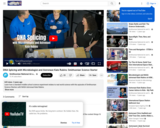
Learn how a standard middle school science experiment relates to real world science with this episode of Smithsonian Science Starters with NASA Astronaut Kate Rubins.
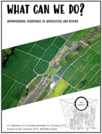
The information, activities and assessments included in these curriculum modules aim to tell a story. This storyline will help students learn the basics of how populations of bacteria become resistant to antibiotics, and how that knowledge can help make sense of the phenomenon presented. Students will learn that local conditions and actions can have a significant impact on global issues. The activities with which students will engage constitute a meaningful pathway to understanding and are not intended to be used in isolation. As you make plans for how these modules will be used, carefully consider the connections and interdependence of the activities, which make it difficult to separate the activities and is not advised.Each module consists of two or three activities. Each activity provides opportunities to develop and use specific elements of the Next Generation Science Standards (NGSS) science and engineering skills and practice(s) to make sense of phenomena and/or to design solutions to problems. They also provide students with the chance to use conceptual understanding that spans scientific disciplines and develop deep understanding of core ideas and content.